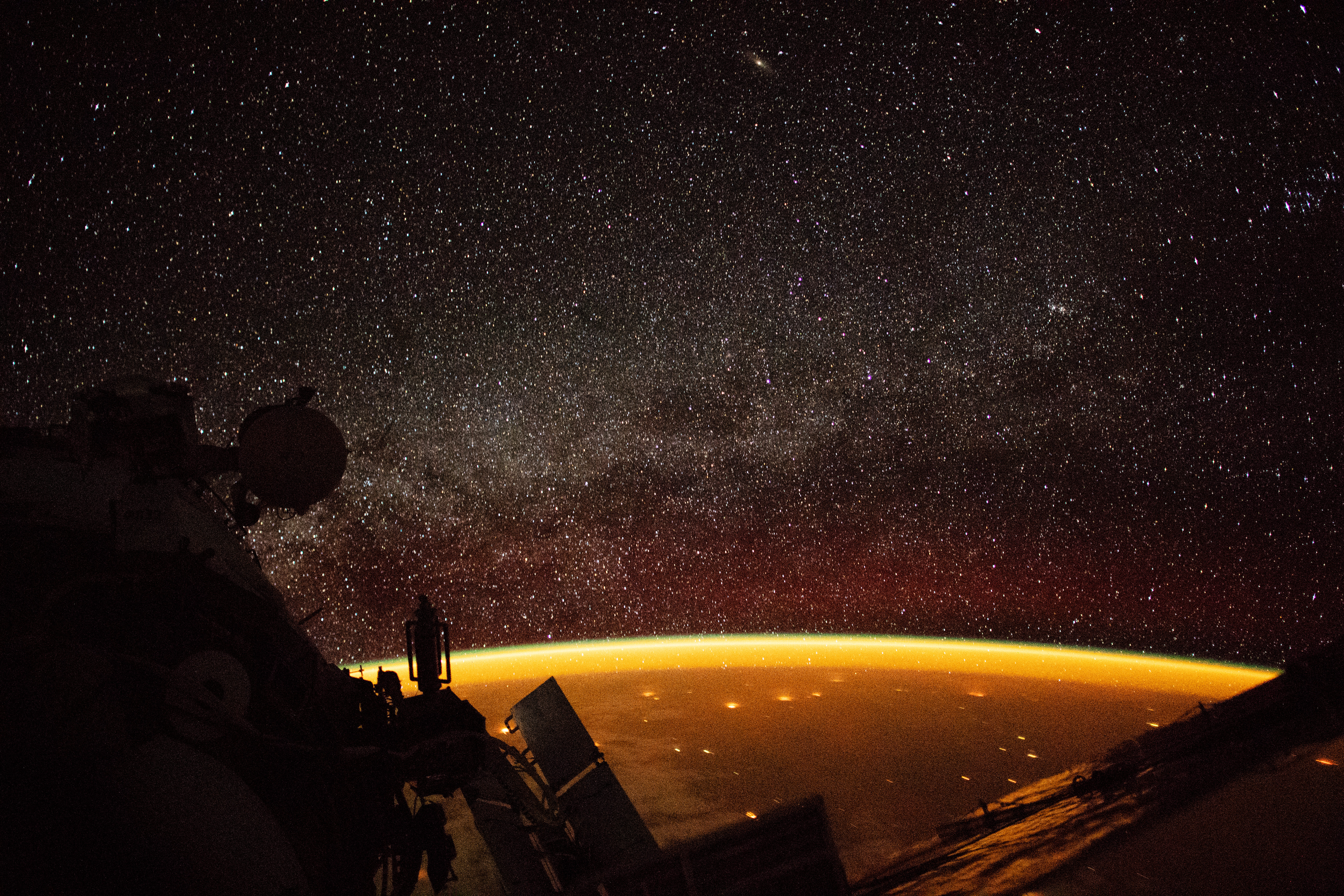[:ja]国際宇宙ステーションISSから撮影した大気光です。

大気光とは、大気光学現象の一種で、地球などの惑星の大気が起こす弱い発光です。以下のような理由で、大気上層において大気光は様々な反応によって発生します。
・日中の太陽光による光イオン化反応で生成されたイオンの再結合
・上層大気に放射される宇宙線によるルミネセンス
・酸素や窒素が、数百km上空で水酸化物イオンと反応することによる化学発光
太陽光の散乱があるため、これらは昼の間は観察することができません。
参考文献: Earth Enveloped in Airglow (NASA)
地球俯瞰画像を見る: LiVEARTH
[Earthview Wonders] No.634: Airglow
International Space Station ISS captured the airglow.

The orange hue enveloping Earth is known as airglow—diffuse bands of light that stretch 80-640km into our atmosphere. The phenomenon typically occurs when molecules (mostly nitrogen and oxygen) are energized by ultraviolet (UV) radiation from sunlight. To release that energy, atoms in the lower atmosphere bump into each other and lose energy in the collision. The result is colorful airglow.
Reference: Earth Enveloped in Airglow (NASA)
See earthview photo gallery: LiVEARTH[:en][Earthview Wonders] No.634: Airglow
International Space Station ISS captured the airglow.

The orange hue enveloping Earth is known as airglow—diffuse bands of light that stretch 80-640km into our atmosphere. The phenomenon typically occurs when molecules (mostly nitrogen and oxygen) are energized by ultraviolet (UV) radiation from sunlight. To release that energy, atoms in the lower atmosphere bump into each other and lose energy in the collision. The result is colorful airglow.
Reference: Earth Enveloped in Airglow (NASA)
See earthview photo gallery: LiVEARTH[:]